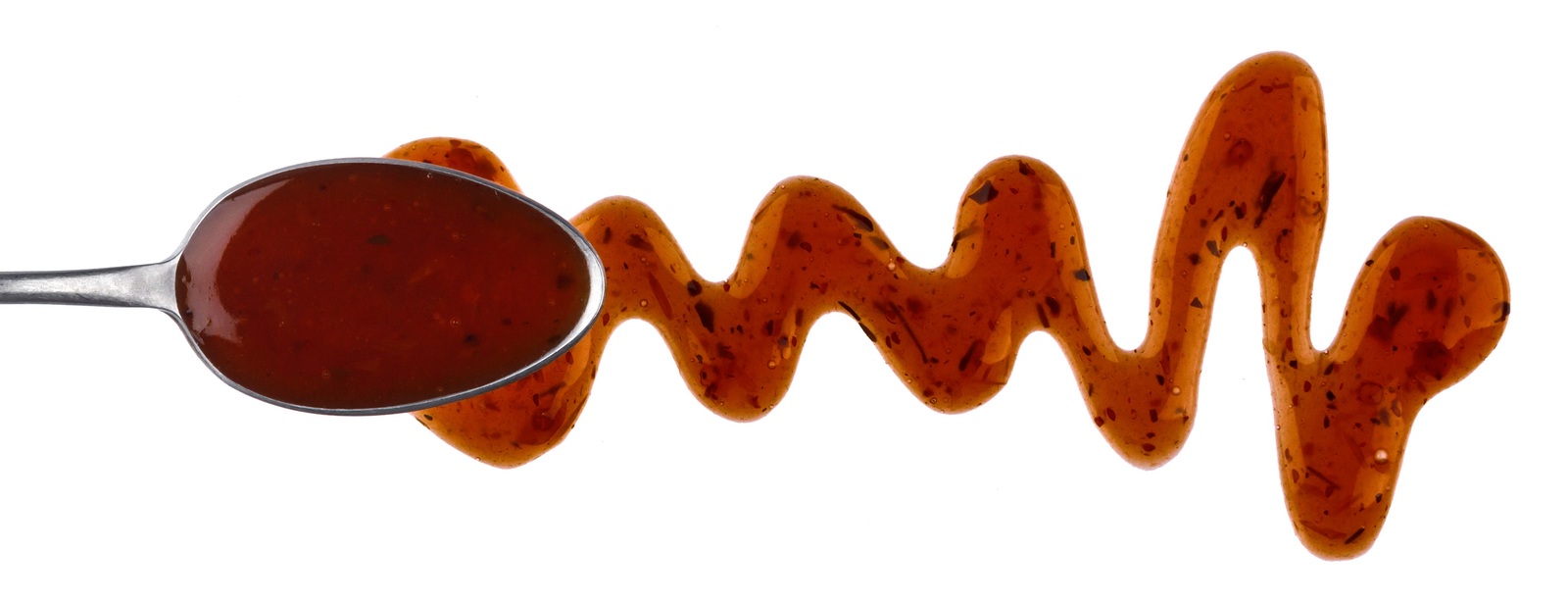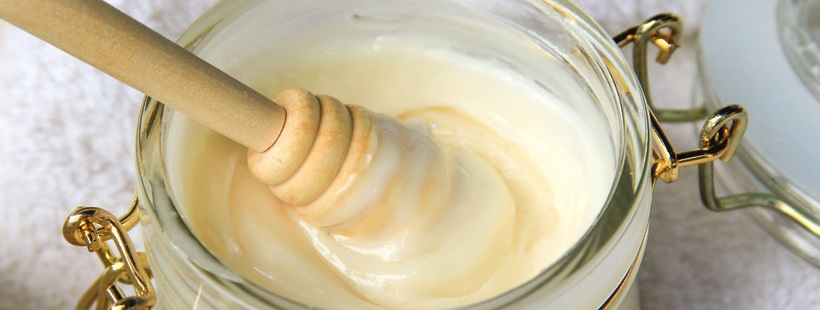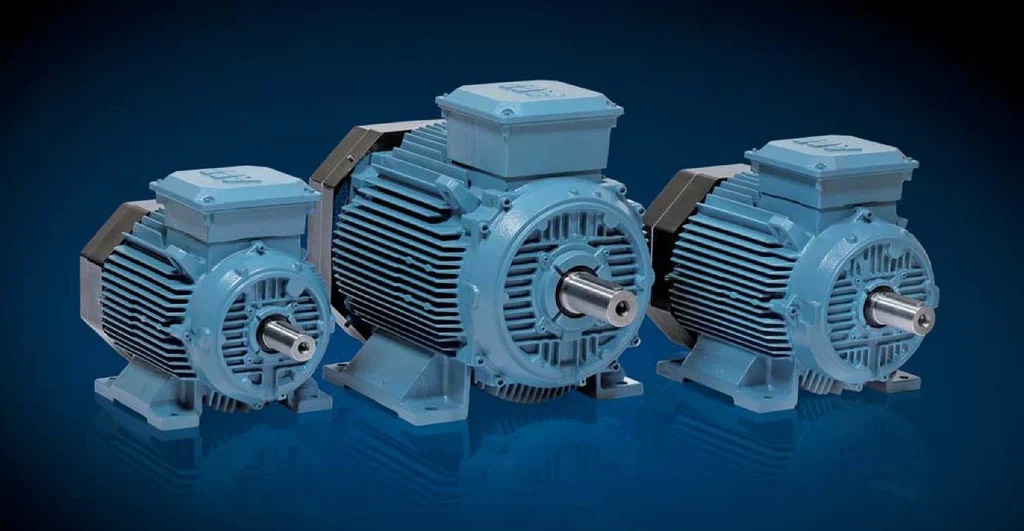ą¤ą░čüč鹥čĆąĖąĘą░č鹊čĆ ą╝ąĄą┤ą░ - 250-2000 ą║ą│/čć
ą£ąĄą┤ čÅą▓ą╗čÅąĄčéčüčÅ ąŠą┤ąĮąĖą╝ ąĖąĘ čüą░ą╝čŗčģ ą┐ąŠą┐čāą╗čÅčĆąĮčŗčģ ąĖ čåąĄąĮąĮčŗčģ ą┐čĆąŠą┤čāą║č鹊ą▓ ą┐čĆąĖčĆąŠą┤čŗ. ąĢą│ąŠ čāąĮąĖą║ą░ą╗čīąĮčŗąĄ ą▓ą║čāčüąŠą▓čŗąĄ ą║ą░č湥čüčéą▓ą░ ąĖ ą╝ąĮąŠą│ąŠąŠą▒čĆą░ąĘąĖąĄ ą┐ąŠą╗ąĄąĘąĮčŗčģ čüą▓ąŠą╣čüčéą▓ ą┤ąĄą╗ą░čÄčé ąĄą│ąŠ ąČąĄą╗ą░ąĮąĮčŗą╝ ąĖ ą▓ąŠčüčéčĆąĄą▒ąŠą▓ą░ąĮąĮčŗą╝ ą┐čĆąŠą┤čāą║č鹊ą╝ ąĮą░ čĆčŗąĮą║ąĄ. ą×ą┤ąĮą░ą║ąŠ, ą╝ąĄą┤ - čŹč鹊 čéą░ą║ąČąĄ ą┐čĆąŠą┤čāą║čé, ą║ąŠč鹊čĆčŗą╣ ą┐ąŠą┤ą▓ąĄčƹȹĄąĮ ąĄčüč鹥čüčéą▓ąĄąĮąĮąŠą╝čā ą┐čĆąŠčåąĄčüčüčā ą║čĆąĖčüčéą░ą╗ą╗ąĖąĘą░čåąĖąĖ ąĖ ą╝ąŠąČąĄčé ą┐ąŠą┤ą▓ąĄčĆą│ą░čéčīčüčÅ ąĘą░ą│čĆčÅąĘąĮąĄąĮąĖčÄ ą╝ąĖą║čĆąŠąŠčĆą│ą░ąĮąĖąĘą╝ą░ą╝ąĖ. ąś ąĖą╝ąĄąĮąĮąŠ ą┐ą░čüč鹥čĆąĖąĘą░čåąĖčÅ ą╝ąĄą┤ą░ ąĖą│čĆą░ąĄčé ą▓ą░ąČąĮčāčÄ čĆąŠą╗čī ą▓ čüąŠčģčĆą░ąĮąĄąĮąĖąĖ čćąĖčüč鹊čéčŗ ąĖ ą┐ąŠą╗ąĄąĘąĮąŠčüčéąĖ ą╝ąĄą┤ą░.
ą¦č鹊 čéą░ą║ąŠąĄ ą┐ą░čüč鹥čĆąĖąĘą░čåąĖčÅ ą╝ąĄą┤ą░ ąĖ ąĘą░č湥ą╝ ąŠąĮą░ ąĮčāąČąĮą░?
ą¤ą░čüč鹥čĆąĖąĘą░čåąĖčÅ ą╝ąĄą┤ą░ - čŹč鹊 ą┐čĆąŠčåąĄčüčü ąĮą░ą│čĆąĄą▓ą░ąĮąĖčÅ ą╝ąĄą┤ą░ ą┤ąŠ ąŠą┐čĆąĄą┤ąĄą╗ąĄąĮąĮąŠą╣ č鹥ą╝ą┐ąĄčĆą░čéčāčĆčŗ čü ą┐ąŠčüą╗ąĄą┤čāčÄčēąĖą╝ ą▒čŗčüčéčĆčŗą╝ ąŠčģą╗ą░ąČą┤ąĄąĮąĖąĄą╝, čü čåąĄą╗čīčÄ čāąĮąĖčćč鹊ąČąĄąĮąĖčÅ ą╝ąĖą║čĆąŠąŠčĆą│ą░ąĮąĖąĘą╝ąŠą▓ ąĖ ąĘą░ą┤ąĄčƹȹ║ąĖ ą┐čĆąŠčåąĄčüčüą░ ą║čĆąĖčüčéą░ą╗ą╗ąĖąĘą░čåąĖąĖ. ąŁč鹊čé ą┐čĆąŠčåąĄčüčü ą┐ąŠą╝ąŠą│ą░ąĄčé čüąŠčģčĆą░ąĮąĖčéčī ą║ą░č湥čüčéą▓ąŠ ą╝ąĄą┤ą░ ąĖ ą┐čĆąŠą┤ą╗ąĖčéčī ąĄą│ąŠ čüčĆąŠą║ ą│ąŠą┤ąĮąŠčüčéąĖ.
ą¤čĆąĄąĖą╝čāčēąĄčüčéą▓ą░ ą┐ą░čüč鹥čĆąĖąĘą░čåąĖąĖ ą╝ąĄą┤ą░
- ąŻąĮąĖčćč鹊ąČąĄąĮąĖąĄ ą╝ąĖą║čĆąŠąŠčĆą│ą░ąĮąĖąĘą╝ąŠą▓ ŌĆō ąĮąĄą║ąŠč鹊čĆąŠąĄ ą║ąŠą╗ąĖč湥čüčéą▓ąŠ ą╝ąĖą║čĆąŠą▒ąŠą▓ ąĖ ą▒ą░ą║č鹥čĆąĖą╣ ą╝ąŠą│čāčé ą┐čĆąĖčüčāčéčüčéą▓ąŠą▓ą░čéčī ą▓ ą╝ąĄą┤ąĄ. ą¤ą░čüč鹥čĆąĖąĘą░čåąĖčÅ čāą▒ąĖą▓ą░ąĄčé čŹčéąĖ ą╝ąĖą║čĆąŠąŠčĆą│ą░ąĮąĖąĘą╝čŗ, čćč鹊 ą┤ąĄą╗ą░ąĄčé ą╝ąĄą┤ ą▒ąĄąĘąŠą┐ą░čüąĮčŗą╝ ą┤ą╗čÅ čāą┐ąŠčéčĆąĄą▒ą╗ąĄąĮąĖčÅ.
- ą¤čĆąĄą┤ąŠčéą▓čĆą░čēąĄąĮąĖąĄ ą║čĆąĖčüčéą░ą╗ą╗ąĖąĘą░čåąĖąĖ - ą┐ą░čüč鹥čĆąĖąĘą░čåąĖčÅ ąĘą░ą╝ąĄą┤ą╗čÅąĄčé ą┐čĆąŠčåąĄčüčü ą║čĆąĖčüčéą░ą╗ą╗ąĖąĘą░čåąĖąĖ ą╝ąĄą┤ą░, ą┐ąŠąĘą▓ąŠą╗čÅčÅ ąĄą╝čā ąŠčüčéą░ą▓ą░čéčīčüčÅ ąČąĖą┤ą║ąĖą╝ ąĖ ą▒ąŠą╗ąĄąĄ čāą┤ąŠą▒ąĮčŗą╝ ą▓ ąĖčüą┐ąŠą╗čīąĘąŠą▓ą░ąĮąĖąĖ.
- ąĪąŠčģčĆą░ąĮąĄąĮąĖąĄ ą║ą░č湥čüčéą▓ą░ - ą┐ą░čüč鹥čĆąĖąĘą░čåąĖčÅ ą┐ąŠą╝ąŠą│ą░ąĄčé čüąŠčģčĆą░ąĮąĖčéčī ą▓ą║čāčüąŠą▓čŗąĄ ąĖ ą┐ąĖčéą░č鹥ą╗čīąĮčŗąĄ ą║ą░č湥čüčéą▓ą░ ą╝ąĄą┤ą░, čüąŠčģčĆą░ąĮčÅčÅ ąĄą│ąŠ čåąĄąĮąĮąŠčüčéčī ąĖ ą┐čĆąĖą▓ą╗ąĄą║ą░č鹥ą╗čīąĮąŠčüčéčī ą┤ą╗čÅ ą┐ąŠčéčĆąĄą▒ąĖč鹥ą╗ąĄą╣.
- ą¤čĆąŠą┤ą╗ąĄąĮąĖąĄ čüčĆąŠą║ą░ ą│ąŠą┤ąĮąŠčüčéąĖ - ą┐ą░čüč鹥čĆąĖąĘąŠą▓ą░ąĮąĮčŗą╣ ą╝ąĄą┤ ąĖą╝ąĄąĄčé ą▒ąŠą╗ąĄąĄ ą┤ą╗ąĖč鹥ą╗čīąĮčŗą╣ čüčĆąŠą║ ą│ąŠą┤ąĮąŠčüčéąĖ ą┐ąŠ čüčĆą░ą▓ąĮąĄąĮąĖčÄ čü ąĮąĄą┐ą░čüč鹥čĆąĖąĘąŠą▓ą░ąĮąĮčŗą╝, čćč鹊 ą┐ąŠąĘą▓ąŠą╗čÅąĄčé ą┐čĆąŠą┤čāą║čéčā ą┤ąŠą╗čīčłąĄ čüąŠčģčĆą░ąĮčÅčéčī čüą▓ąŠąĖ čüą▓ąŠą╣čüčéą▓ą░ ąĖ ą║ą░č湥čüčéą▓ąŠ.
ą¤čĆąŠčåąĄčüčü ą┐ą░čüč鹥čĆąĖąĘą░čåąĖąĖ ą╝ąĄą┤ą░
ąŁčéą░ą┐ 1 - ą┐ąŠą┤ą│ąŠč鹊ą▓ą║ą░. ą£ąĄą┤ ą┤ąŠą╗ąČąĄąĮ ą▒čŗčéčī čģąŠčĆąŠčłąŠ ąŠčéčäąĖą╗čīčéčĆąŠą▓ą░ąĮ ąĖ ąŠčćąĖčēąĄąĮ ąŠčé ąĘą░ą│čĆčÅąĘąĮąĄąĮąĖą╣ ą┐ąĄčĆąĄą┤ ą┐ą░čüč鹥čĆąĖąĘą░čåąĖąĄą╣.
ąŁčéą░ą┐ 2 - ąĮą░ą│čĆąĄą▓ą░ąĮąĖąĄ. ą£ąĄą┤ ą┐ąŠą┤ą▓ąĄčĆą│ą░ąĄčéčüčÅ ąĮą░ą│čĆąĄą▓ą░ąĮąĖčÄ ą┤ąŠ ąŠą┐čĆąĄą┤ąĄą╗ąĄąĮąĮąŠą╣ č鹥ą╝ą┐ąĄčĆą░čéčāčĆčŗ (ąŠą▒čŗčćąĮąŠ ąŠą║ąŠą╗ąŠ 63┬░C).
ąŁčéą░ą┐ 3 - ąŠčģą╗ą░ąČą┤ąĄąĮąĖąĄ. ą¤ąŠčüą╗ąĄ ąĮą░ą│čĆąĄą▓ą░ąĮąĖčÅ ą╝ąĄą┤ ą▒čŗčüčéčĆąŠ ąŠčģą╗ą░ąČą┤ą░ąĄčéčüčÅ, čćč鹊ą▒čŗ ąŠčüčéą░ąĮąŠą▓ąĖčéčī ą┐čĆąŠčåąĄčüčü ą┤ą░ą╗čīąĮąĄą╣čłąĄą│ąŠ ąĮą░ą│čĆąĄą▓ą░ąĮąĖčÅ ąĖ čüąŠčģčĆą░ąĮąĖčéčī ą║ą░č湥čüčéą▓ąŠ ą┐čĆąŠą┤čāą║čéą░.
ąŁčéą░ą┐ 4 - čāą┐ą░ą║ąŠą▓ą║ą░ ąĖ čģčĆą░ąĮąĄąĮąĖąĄ. ą¤ą░čüč鹥čĆąĖąĘąŠą▓ą░ąĮąĮčŗą╣ ą╝ąĄą┤ čāą┐ą░ą║ąŠą▓čŗą▓ą░ąĄčéčüčÅ ą▓ ą│ąĄčĆą╝ąĄčéąĖčćąĮčŗąĄ ą║ąŠąĮč鹥ą╣ąĮąĄčĆčŗ ąĖ čģčĆą░ąĮąĖčéčüčÅ ą▓ ą┐čĆąŠčģą╗ą░ą┤ąĮąŠą╝ ąĖ čüčāčģąŠą╝ ą╝ąĄčüč鹥 ą┤ą╗čÅ čüąŠčģčĆą░ąĮąĄąĮąĖčÅ čüą▓ąĄąČąĄčüčéąĖ ąĖ ą║ą░č湥čüčéą▓ą░.
ą¤ą░čüč鹥čĆąĖąĘą░čåąĖčÅ ą╝ąĄą┤ą░ čÅą▓ą╗čÅąĄčéčüčÅ ą▓ą░ąČąĮčŗą╝ ą┐čĆąŠčåąĄčüčüąŠą╝ ą┤ą╗čÅ ąŠą▒ąĄčüą┐ąĄč湥ąĮąĖčÅ ą▒ąĄąĘąŠą┐ą░čüąĮąŠčüčéąĖ ąĖ ą║ą░č湥čüčéą▓ą░ ą┐čĆąŠą┤čāą║čéą░. ą×ąĮą░ ą┐ąŠą╝ąŠą│ą░ąĄčé čāąĮąĖčćč鹊ąČąĖčéčī ą╝ąĖą║čĆąŠąŠčĆą│ą░ąĮąĖąĘą╝čŗ, ą┐čĆąĄą┤ąŠčéą▓čĆą░čéąĖčéčī ą║čĆąĖčüčéą░ą╗ą╗ąĖąĘą░čåąĖčÄ ąĖ ą┐čĆąŠą┤ą╗ąĖčéčī čüčĆąŠą║ ą│ąŠą┤ąĮąŠčüčéąĖ ą╝ąĄą┤ą░. ą¤ą░čüč鹥čĆąĖąĘą░čåąĖčÅ - čŹč鹊 ąĮąĄąŠą▒čģąŠą┤ąĖą╝čŗą╣ čłą░ą│ ą▓ ą┐čĆąŠąĖąĘą▓ąŠą┤čüčéą▓ąĄ ą╝ąĄą┤ą░, ą║ąŠč鹊čĆčŗą╣ ą┐ąŠąĘą▓ąŠą╗čÅąĄčé čüąŠčģčĆą░ąĮąĖčéčī ąĄą│ąŠ čåąĄąĮąĮąŠčüčéčī ąĖ čāą▓ąĄčĆąĄąĮąĮąŠčüčéčī ą┐ąŠčéčĆąĄą▒ąĖč鹥ą╗ąĄą╣ ą▓ ąĄą│ąŠ ą║ą░č湥čüčéą▓ąĄ.
ą×ą▒ąŠčĆčāą┤ąŠą▓ą░ąĮąĖąĄ ą┤ą╗čÅ ą┐ą░čüč鹥čĆąĖąĘą░čåąĖąĖ ą╝ąĄą┤ą░
ą¤ą░čüč鹥čĆąĖąĘą░č鹊čĆ ą╝ąĄą┤ą░ - čŹč鹊 čüą┐ąĄčåąĖą░ą╗čīąĮąŠąĄ ąŠą▒ąŠčĆčāą┤ąŠą▓ą░ąĮąĖąĄ, ą┐čĆąĄą┤ąĮą░ąĘąĮą░č湥ąĮąĮąŠąĄ ą┤ą╗čÅ č鹥čĆą╝ąĖč湥čüą║ąŠą╣ ąŠą▒čĆą░ą▒ąŠčéą║ąĖ ą╝ąĄą┤ą░ čü čåąĄą╗čīčÄ čāąĮąĖčćč鹊ąČąĄąĮąĖčÅ ą╝ąĖą║čĆąŠąŠčĆą│ą░ąĮąĖąĘą╝ąŠą▓ (ą▒ą░ą║č鹥čĆąĖą╣, ą┤čĆąŠąČąČąĄą╣, ą┐ą╗ąĄčüąĄąĮąĖ) ąĖ čüąĮąĖąČąĄąĮąĖčÅ ą▓ą╗ą░ąČąĮąŠčüčéąĖ ą┤ą╗čÅ ą┐ąŠą▓čŗčłąĄąĮąĖčÅ ąĄą│ąŠ čüčéą░ą▒ąĖą╗čīąĮąŠčüčéąĖ ąĖ čüčĆąŠą║ą░ čģčĆą░ąĮąĄąĮąĖčÅ. ą¤čĆąŠčåąĄčüčü ą┐ą░čüč鹥čĆąĖąĘą░čåąĖąĖ ą┐ąŠąĘą▓ąŠą╗čÅąĄčé čüąŠčģčĆą░ąĮąĖčéčī ą╝ąĄą┤ ą▓ ą║ą░č湥čüčéą▓ąĄąĮąĮąŠą╝ čüąŠčüč鹊čÅąĮąĖąĖ, ąĖąĘą▒ąĄą│ą░čÅ č乥čĆą╝ąĄąĮčéą░čåąĖąĖ ąĖ čüąŠčģčĆą░ąĮčÅčÅ ąĄą│ąŠ ą┐čĆąĖčĆąŠą┤ąĮčŗąĄ čüą▓ąŠą╣čüčéą▓ą░.
ąśčüą┐ąŠą╗čīąĘąŠą▓ą░ąĮąĖąĄ ą┐ą░čüč鹥čĆąĖąĘą░č鹊čĆą░ ą▓ ą┐čĆąŠčåąĄčüčüąĄ ąŠą▒čĆą░ą▒ąŠčéą║ąĖ ą╝ąĄą┤ą░ čéą░ą║ąČąĄ ą╝ąŠąČąĄčé ą▒čŗčéčī ąŠą▒čāčüą╗ąŠą▓ą╗ąĄąĮąŠ č鹥ą╝, čćč鹊 ą┐ąŠčéčĆąĄą▒ąĖč鹥ą╗ąĖ ą┐čĆąĄą┤ą┐ąŠčćąĖčéą░čÄčé ą▒ąŠą╗ąĄąĄ ąČąĖą┤ą║ąĖą╣ ą╝ąĄą┤.
ąØą░ą│čĆąĄą▓ ąĖ ąŠčģą╗ą░ąČą┤ąĄąĮąĖąĄ ą╝ąĄą┤ą░ ą┐ąŠąĘą▓ąŠą╗čÅčÄčé čüąŠčģčĆą░ąĮąĖčéčī ą╝ąĄą┤ ą▓ ąČąĖą┤ą║ąŠą╝ čüąŠčüč鹊čÅąĮąĖąĖ ą▓ č鹥č湥ąĮąĖąĄ ą▒ąŠą╗ąĄąĄ ą┤ą╗ąĖč鹥ą╗čīąĮąŠą│ąŠ ą▓čĆąĄą╝ąĄąĮąĖ. ąóą░ą║ąČąĄ ą╝ąĄč鹊ą┤ ą┐ą░čüč鹥čĆąĖąĘą░čåąĖąĖ ąĮąĄąĘąĮą░čćąĖč鹥ą╗čīąĮąŠ ą▓ą╗ąĖčÅąĄčé ąĮą░ ąĖąĮą┤ąĄą║čü HMF (ąĮą░ą╗ąĖčćąĖąĄ ą▓┬Ā ą║ąŠąĮąĄčćąĮąŠą╝┬Ā ą┐čĆąŠą┤čāą║č鹥 ą┐čĆąŠą┤čāą║čéą░ čģąĖą╝ąĖč湥čüą║ąŠą│ąŠ čĆą░ąĘčĆčāčłąĄąĮąĖčÅ čüą░čģą░čĆąŠą▓)┬Ā ┬Ā- ąĄą│ąŠ ąĘąĮą░č湥ąĮąĖąĄ ąŠčüčéą░ąĄčéčüčÅ ąĮąĖąĘą║ąĖą╝.
ą¤čĆąĖąĮčåąĖą┐ čĆą░ą▒ąŠčéčŗ ą┐ą░čüč鹥čĆąĖąĘą░č鹊čĆą░ ą╝ąĄą┤ą░
ąŚą░ą│čĆčāąĘą║ą░ ą╝ąĄą┤ą░ - ąĮą░čćą░ą╗čīąĮčŗą╣ čŹčéą░ą┐ ąĘą░ą║ą╗čÄčćą░ąĄčéčüčÅ ą▓ ąĘą░ą│čĆčāąĘą║ąĄ čüčŗčĆąŠą│ąŠ ą╝ąĄą┤ą░ ą▓ čüą┐ąĄčåąĖą░ą╗čīąĮčŗą╣ čĆąĄąĘąĄčĆą▓čāą░čĆ ąĖą╗ąĖ ąĄą╝ą║ąŠčüčéčī ą┐ą░čüč鹥čĆąĖąĘą░č鹊čĆą░ čü ą┐ąŠą╝ąŠčēčīčÄ ąĮą░čüąŠčüą░, ą┤ą░ą╗ąĄąĄ ą╝ąĄą┤ ą┐čĆąŠą┤ą▓ąĖą│ą░ąĄčéčüčÅ č湥čĆąĄąĘ čäąĖą╗čīčéčĆ ą│čĆčāą▒ąŠą╣ ąŠčćąĖčüčéą║ąĖ┬Ā ą▓ čéčĆčāą▒čćą░čéčŗą╣ č鹥ą┐ą╗ąŠąŠą▒ą╝ąĄąĮąĮąĖą║ ąĮą░ą│čĆąĄą▓ą░č鹥ą╗čīąĮąŠą╣ čüąĖčüč鹥ą╝čŗ.
ąÆ ąĮą░ą│čĆąĄą▓ą░č鹥ą╗čīąĮąŠą╣ čüąĖčüč鹥ą╝ąĄ ą╝ąĄą┤ ą┐ąŠčüč鹥ą┐ąĄąĮąĮąŠ ąĮą░ą│čĆąĄą▓ą░ąĄčéčüčÅ ą┤ąŠ ąŠą┐čĆąĄą┤ąĄą╗ąĄąĮąĮąŠą│ąŠ ąĘąĮą░č湥ąĮąĖčÅ, ąŠą▒čŗčćąĮąŠ ąŠą║ąŠą╗ąŠ 63-75┬░C. ąóąŠčćąĮą░čÅ č鹥ą╝ą┐ąĄčĆą░čéčāčĆą░ ąĘą░ą▓ąĖčüąĖčé ąŠčé čéąĖą┐ą░ ą╝ąĄą┤ą░ ąĖ čĆąĄą│čāą╗ąĖčĆčāąĄčéčüčÅ ą┤ą╗čÅ ą┤ąŠčüčéąĖąČąĄąĮąĖčÅ ąŠą┐čéąĖą╝ą░ą╗čīąĮąŠą│ąŠ ą┐ą░čüč鹥čĆąĖąĘą░čåąĖąŠąĮąĮąŠą│ąŠ čŹčäč乥ą║čéą░. ąÆ ąĮą░čłąĄą╝ ą┐ą░čüč鹥čĆąĖąĘą░č鹊čĆąĄ č鹥ą┐ą╗ąŠąĮąŠčüąĖč鹥ą╗ąĄą╝ ą┤ą╗čÅ čüąĖčüč鹥ą╝čŗ ąĮą░ą│čĆąĄą▓ą░ čÅą▓ą╗čÅąĄčéčüčÅ ą▓ąŠą┤ą░, ą║ąŠč鹊čĆą░čÅ čåąĖčĆą║čāą╗ąĖčĆčāąĄčé ą▓ąŠą║čĆčāą│ čéčĆčāą▒, ą┐ąŠ ą║ąŠč鹊čĆčŗą╝ ą┐čĆąŠą┤ą▓ąĖą│ą░ąĄčéčüčÅ ą╝ąĄą┤.
ąØą░ą│čĆąĄą▓ ą╝ąĄą┤ą░ ą┤ąĄą╗ą░ąĄčé ąĄą│ąŠ ą┤ąŠčüčéą░č鹊čćąĮąŠ ąČąĖą┤ą║ąĖą╝, čćč鹊ą▒čŗ ąĖą╝ąĄčéčī ą▓ąŠąĘą╝ąŠąČąĮąŠčüčéčī ąŠčéčäąĖą╗čīčéčĆąŠą▓ą░čéčī ą▓čüąĄ ąĮąĄąČąĄą╗ą░č鹥ą╗čīąĮčŗąĄ ą┐čĆąĖą╝ąĄčüąĖ - ą┐č湥ą╗ąĖąĮčŗą╣ ą▓ąŠčüą║, čćą░čüčéąĖ č鹥ą╗ą░ ą┐č湥ą╗ ąĖ ą┤čĆčāą│ąĖąĄ čćą░čüčéąĖčåčŗ.
ą¤ąŠčüą╗ąĄ ąĮą░ą│čĆąĄą▓ą░ ą╝ąĄą┤ ą┐ąŠ čüąĖčüč鹥ą╝ąĄ čéčĆčāą▒ąŠą┐čĆąŠą▓ąŠą┤ąŠą▓ ąĖ č湥čĆąĄąĘ čäąĖą╗čīčéčĆ č鹊ąĮą║ąŠą╣ ąŠčćąĖčüčéą║ąĖ ą┐ąŠą┐ą░ą┤ą░ąĄčé ą▓ čéčĆčāą▒čćą░čéčŗą╣ č鹥ą┐ą╗ąŠąŠą▒ą╝ąĄąĮąĮąĖą║ čüąĖčüč鹥ą╝čŗ ąŠčģą╗ą░ąČą┤ąĄąĮąĖčÅ, ą│ą┤ąĄ ą┐čĆąŠąĖčüčģąŠą┤ąĖčé ąĄą│ąŠ ą┐ąŠčüč鹥ą┐ąĄąĮąĮąŠąĄ ąŠčģą╗ą░ąČą┤ąĄąĮąĖąĄ. ąÆ ą▓ąĖą┤ąĄ č鹥ą┐ą╗ąŠąĮąŠčüąĖč鹥ą╗čÅ ą▓ čüąĖčüč鹥ą╝ąĄ ąŠčģą╗ą░ąČą┤ąĄąĮąĖčÅ ąĖčüą┐ąŠą╗čīąĘčāąĄčéčüčÅ čģąŠą╗ąŠą┤ąĮą░čÅ ą▓ąŠą┤ą░, ą║ąŠč鹊čĆą░čÅ ąĖą╝ąĄąĄčé č鹥ą╝ą┐ąĄčĆą░čéčāčĆčā ąĮąĄ ą▓čŗčłąĄ 7 ą│čĆą░ą┤čāčüąŠą▓.
ą¤ąŠčüą╗ąĄ ą┐ą░čüč鹥čĆąĖąĘą░čåąĖąĖ ą╝ąĄą┤ą░, ą║ąŠą│ą┤ą░ ąŠąĮ ą┤ąŠčüčéąĖą│ą░ąĄčé ą║ąŠą╝ąĮą░čéąĮąŠą╣ č鹥ą╝ą┐ąĄčĆą░čéčāčĆčŗ, ąŠąĮ ą│ąŠč鹊ą▓ ą║ čāą┐ą░ą║ąŠą▓ą║ąĄ. ą£ąĄą┤ ą╝ąŠąČąĄčé ą▒čŗčéčī čāą┐ą░ą║ąŠą▓ą░ąĮ ą▓ čĆą░ąĘą╗ąĖčćąĮčŗąĄ ąĄą╝ą║ąŠčüčéąĖ: čüč鹥ą║ą╗čÅąĮąĮčŗąĄ ą▒ą░ąĮą║ąĖ, ą┐ą╗ą░čüčéąĖą║ąŠą▓čŗąĄ ą▒čāčéčŗą╗ą║ąĖ ąĖą╗ąĖ ą┤čĆčāą│ąĖąĄ čāą┐ą░ą║ąŠą▓ąŠčćąĮčŗąĄ ą╝ą░č鹥čĆąĖą░ą╗čŗ.
ąÆą░ąČąĮąŠ ąŠčéą╝ąĄčéąĖčéčī, čćč鹊 ą┐ą░čüč鹥čĆąĖąĘą░čåąĖčÅ ą╝ąĄą┤ą░ čÅą▓ą╗čÅąĄčéčüčÅ ą╝čÅą│ą║ąĖą╝ ą╝ąĄč鹊ą┤ąŠą╝ č鹥čĆą╝ąĖč湥čüą║ąŠą╣ ąŠą▒čĆą░ą▒ąŠčéą║ąĖ, ą║ąŠč鹊čĆčŗą╣ ą╝ąĖąĮąĖą╝ąĖąĘąĖčĆčāąĄčé ą▓ąŠąĘą┤ąĄą╣čüčéą▓ąĖąĄ ąĮą░ ąĄą│ąŠ ą║ą░č湥čüčéą▓ąŠ ąĖ ą┐ąĖčéą░č鹥ą╗čīąĮčŗąĄ čüą▓ąŠą╣čüčéą▓ą░. ąóąĄą╝ ąĮąĄ ą╝ąĄąĮąĄąĄ, ą┐čĆąŠčåąĄčüčü ą┐ą░čüč鹥čĆąĖąĘą░čåąĖąĖ ą╝ąŠąČąĄčé ąĖąĘą╝ąĄąĮąĖčéčī ąĮąĄą║ąŠč鹊čĆčŗąĄ ąŠčĆą│ą░ąĮąŠą╗ąĄą┐čéąĖč湥čüą║ąĖąĄ čüą▓ąŠą╣čüčéą▓ą░ ą╝ąĄą┤ą░, ą▓ č鹊ą╝ čćąĖčüą╗ąĄ ą░čĆąŠą╝ą░čé ąĖ čåą▓ąĄčé, ąĮąŠ čŹč鹊 ąŠą▒čŗčćąĮąŠ ąĮąĄąĘąĮą░čćąĖč鹥ą╗čīąĮąŠąĄ ąĖąĘą╝ąĄąĮąĄąĮąĖąĄ, ą║ąŠč鹊čĆąŠąĄ ąĮąĄ ą▓ą╗ąĖčÅąĄčé ąĮą░ ąĄą│ąŠ ą┐ąŠą╗ąĄąĘąĮčŗąĄ čüą▓ąŠą╣čüčéą▓ą░.
ą£čŗ čéą░ą║ąČąĄ ą┐čĆąĄą┤ą╗ą░ą│ą░ąĄą╝ čłąĖčĆąŠą║ąĖą╣ ą░čüčüąŠčĆčéąĖą╝ąĄąĮčé ąŠą▒ąŠčĆčāą┤ąŠą▓ą░ąĮąĖčÅ ą┤ą╗čÅ ą┐ąĄčĆąĄčĆą░ą▒ąŠčéą║ąĖ ą╝ąĄą┤ą░, čĆą░ąĘčĆą░ą▒ąŠčéą░ąĮąĮąŠą│ąŠ čü čāč湥č鹊ą╝ čāąĮąĖą║ą░ą╗čīąĮčŗčģ čéčĆąĄą▒ąŠą▓ą░ąĮąĖą╣ ą║ą░ąČą┤ąŠą│ąŠ čŹčéą░ą┐ą░ ą┐čĆąŠą╝čŗčłą╗ąĄąĮąĮąŠą╣ ą┐ąĄčĆąĄčĆą░ą▒ąŠčéą║ąĖ ą╝ąĄą┤ą░.

















